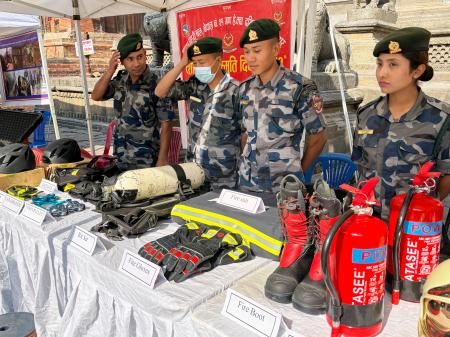Nepal Earthquake Memorial: A Decade of Reflection and Resilience
Ten years ago, on April 25th, 2015, a devastating earthquake struck Nepal, claiming thousands of lives and leaving an enduring scar on the nation. The 7.8 magnitude quake, and its subsequent aftershocks, caused widespread destruction, crumbling ancient monuments and leaving countless families homeless. Today, as we mark a decade since this tragedy, we reflect on the immense loss, the remarkable resilience of the Nepali people, and the enduring legacy of the earthquake memorials that stand as poignant reminders of the event.
A Nation Remembers: Memorials Across Nepal
The earthquake's impact spurred the creation of numerous memorials across Nepal, each serving as a unique testament to the lives lost and the strength shown in recovery. These memorials aren't just structures; they're living testaments to the spirit of Nepal.
The National Earthquake Memorial Park:
Located in Kathmandu, this park stands as a central point of remembrance. It's more than just a memorial; it's a space for reflection, incorporating elements of nature and incorporating the stories of survivors. The park provides a place for quiet contemplation and serves as a potent symbol of Nepal's journey towards healing. Further information on the park's design and features can be found on the official website (link to be added if available).
Community-Based Memorials:
Beyond the larger national memorial, numerous smaller, community-based memorials dot the landscape. These often take the form of simple chortens (Buddhist stupas) or plaques, each bearing the names of those lost within a specific village or region. These localized memorials provide a deeply personal connection to the tragedy, allowing communities to grieve and remember collectively. The significance of these grassroots efforts underscores the intimate impact the earthquake had on individual lives and communities.
Architectural Rebuilding and Memorialization:
The rebuilding efforts themselves can also be seen as a form of memorialization. The meticulous reconstruction of damaged temples and historical sites, such as the Boudhanath Stupa, not only preserves Nepal's cultural heritage but also symbolizes the nation's resolve to overcome adversity. The careful preservation and rebuilding process act as a powerful, ongoing memorial.
Beyond the Stone: Resilience and Reconstruction
The earthquake memorials are far more than just static structures. They represent a decade of incredible resilience, innovation, and international collaboration. The recovery has been a long and challenging process, but the spirit of the Nepali people has shone through.
Lessons Learned in Disaster Response:
The 2015 earthquake highlighted critical aspects of disaster preparedness and response. International aid played a crucial role, but the experience also underscored the importance of local expertise and community-led initiatives in effective relief and reconstruction efforts. These lessons learned have informed disaster management strategies worldwide.
Tourism and Economic Recovery:
The earthquake significantly impacted Nepal's tourism sector, a vital part of its economy. However, the recovery efforts have also seen a renewed focus on sustainable tourism, promoting responsible travel and supporting local communities. The rebuilding process has also stimulated economic activity, fostering new jobs and opportunities.
Looking Towards the Future:
While the scars of the earthquake remain visible, the memorials serve as powerful reminders of the nation's enduring spirit. The rebuilding efforts and continued focus on disaster preparedness ensure that Nepal is better equipped to face future challenges. The legacy of the 2015 earthquake is not just about the tragedy but also about the extraordinary resilience and ongoing progress of the Nepali people.
Conclusion: Remembering and Moving Forward
The Nepal earthquake memorials stand as powerful symbols of remembrance, resilience, and the enduring human spirit. A decade on, they serve as a testament to the tragedy experienced, the significant losses suffered, and the remarkable recovery that followed. By remembering, we honor the victims, and by understanding the past, we build a stronger and more resilient future for Nepal.
Keywords: Nepal Earthquake, Earthquake Memorial, Nepal Earthquake 2015, Nepal Reconstruction, Disaster Relief, Resilience, Community Memorials, Boudhanath Stupa, Kathmandu, Nepal Tourism, Disaster Preparedness.
